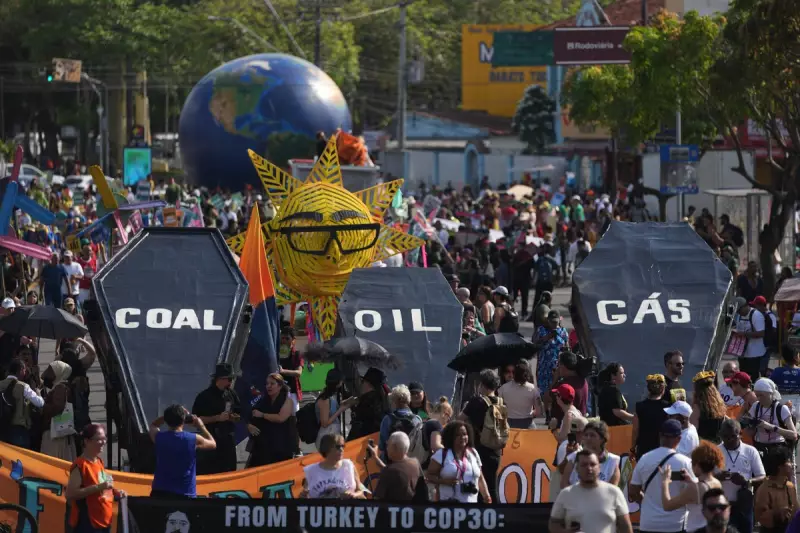
Thousands of demonstrators have taken to the streets of Belem, Brazil, marking the halfway point of the United Nations COP30 climate talks with their largest and most vibrant protest yet.
A Sea of Colour and Cause
On Saturday, 15 November 2025, the city transformed into a moving canvas of protest. Participants employed powerful symbolism to voice their demands. Some mourned in black dresses, holding a funeral for fossil fuels. Hundreds of others wore striking red shirts, a poignant tribute to the blood shed by environmental defenders. The air filled with chants as massive flags waved and signs were held high, all coordinated by organisers using trucks with elevated platforms and powerful sound systems.
Marisol Garcia, a Kichwa woman from Peru marching at the front of one group, explained the collective mission was to pressure global leaders into making "more humanized decisions" for the planet.
A Contrast in Protest Freedom
The planned march covered approximately 4 kilometres (2.5 miles), passing near the main COP30 venue. Unlike disruptive actions earlier in the week—which twice surrounded the talks and resulted in minor injuries to two security guards—this demonstration was scheduled to stop short of the facility, allowing a full day of negotiations to proceed.
Many protesters celebrated the ability to demonstrate openly, a stark contrast to recent climate summits held in nations with more authoritarian regimes, such as Azerbaijan, the United Arab Emirates, and Egypt. Youth leader Ana Heloisa Alves, 27, called it the biggest climate march she had ever experienced. "This is incredible," she said. "You can’t ignore all these people."
Diverse Voices, Unified Demands
The protest was a coalition of various environmental and social movements, each with specific grievances. Ana Heloisa Alves was there to defend the Tapajos River from commercial development, her group's signs declaring, "The river is for the people."
Pablo Neri, a coordinator for the rural workers' group Movimento dos Trabajadores Rurais Sem Terra, argued that the climate movement is shifting towards popular participation and that the talks' organisers must involve more people to reflect this change.
The absence of the United States, which has withdrawn from the Paris Agreement under President Donald Trump, did not go unnoticed. One demonstrator, Flavio Pinto, made a theatrical statement by wearing a brown suit and an oversized American flag top hat while standing on stilts and fanning himself with fake hundred-dollar bills bearing Trump's face. His sign read, "Imperialism produces wars and environmental crises."
Vitoria Balbina, marching with a group of women wearing distinctive hats made from Babaçu palm fronds, highlighted that their fight was about more than policy. For her community, which seeks greater access to these trees on private land, it is about livelihoods and a deep cultural way of life.
As the marchers, a sea of red, white, and green flags, moved through the city, they drew the attention of onlookers. One man carrying grocery bags paused to watch the spectacle and simply said, "Beautiful."
With the climate talks scheduled to conclude on Friday, analysts and participants hold low expectations for major new agreements. However, there is hope for progress on past promises, particularly regarding financial aid to help poorer nations adapt to the escalating effects of climate change.





